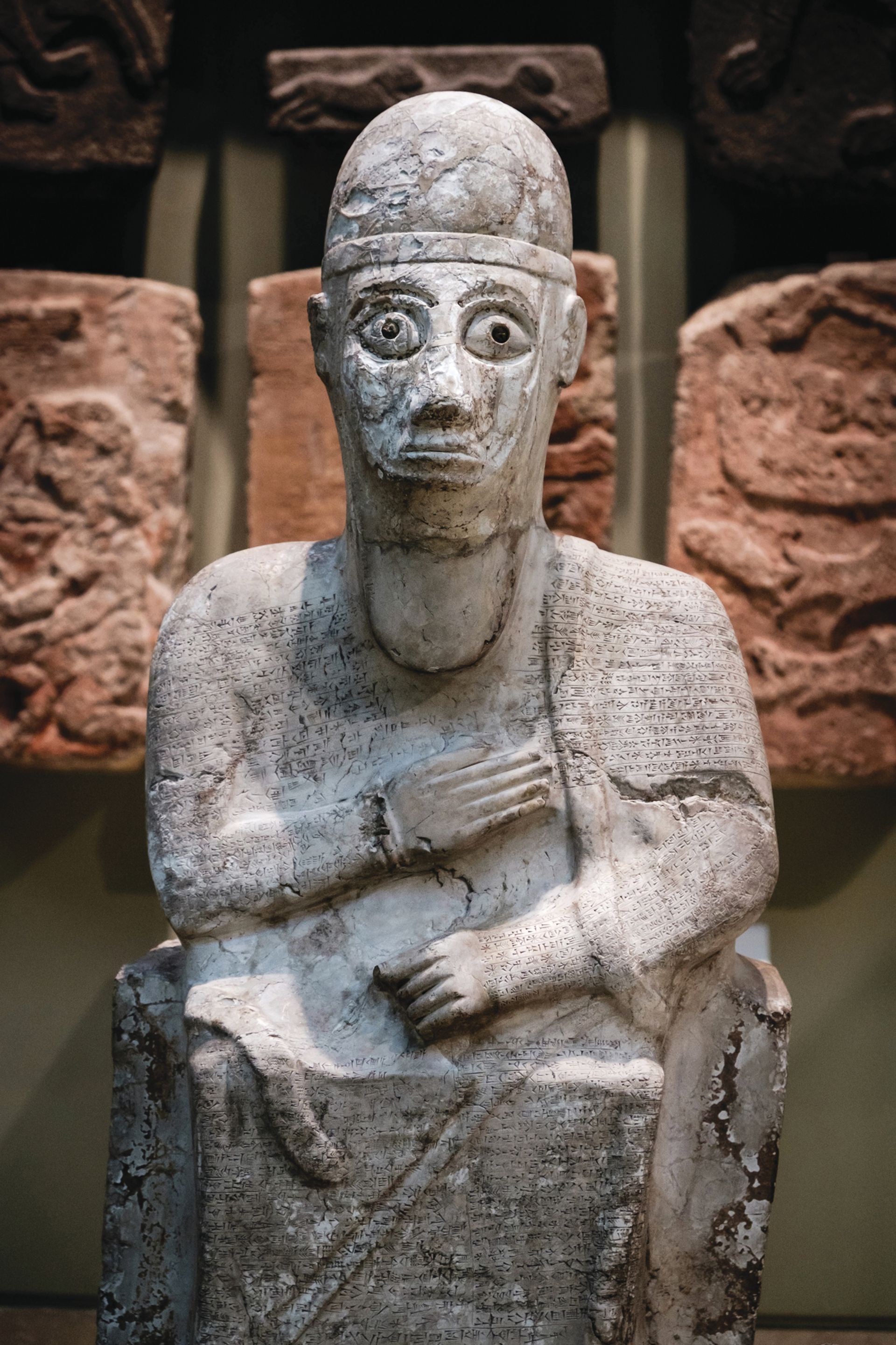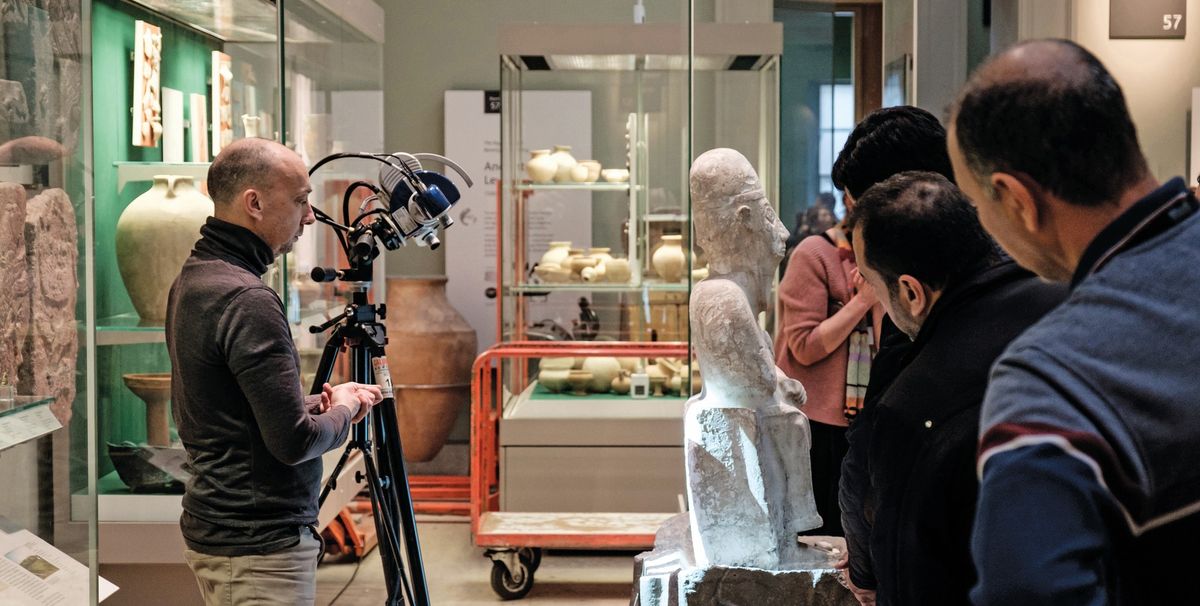A 3,500-year-old statue of a refugee from Aleppo that has not left the British Museum (BM) in nearly 80 years because of conservation concerns is now accessible to anyone with an internet connection. The London gallery collaborated with Factum Foundation to produce precise 3D renderings of the BM’s statue of Idrimi—a refugee from what is modern-day Syria who rose to be the king of Alalakh, in southern Turkey—using the latest photogrammetry and 3D-scanning techniques. The 3D scans and digital model of the artefact are available on the online platform Sketchfab.
The statue of Idrimi, excavated at Alalakh in 1939 by the British archaeologist Leonard Woolley, is one of the gems in the BM’s collection. It features a 104-line autobiography of the king that recounts his days as a political exile in the land of Canaan as well as his later military campaigns. Scholars consider the text to be one of the most significant cuneiform discoveries. “You don’t find political autobiographies of real people in the ancient Middle East, certainly not in this period,” says James Fraser, a project curator in the museum’s Middle East department. “A remarkable number of stories can be told through Idrimi’s life story.”

The sculpture’s fragile condition prevents the museum from lending it or displaying it out in the open. It is encased in glass because “dust contains moisture, which wears away the natural laminates in the stone”, Fraser says. It is carved from magnesite—a soft, brittle stone that may have been chosen because it was easy to carve. The glass barrier also prevents close study of the text. Instead, scholars have had to rely on old photographs and transliterations to aid their research. “The digital model will revolutionise access to the object,” he says. “Now scholars can read it like they are holding [the statue], tracing their hand over the inscription.” It will also act as a great touchstone for conservators because it is an accurate representation of the object’s condition as of 2017.
Factum Foundation, which specialises in data recording and the creation of exact replicas, used two methods: close-range photogrammetry, which involves taking multiple colour photographs of the object from different angels; and white-light scanning, which captures 3D data by projecting patterns onto the surface of the object. Factum’s founder Adam Lowe wanted to demonstrate that it is possible, with proper training, to match the quality of data gathered using both methods, thanks to recent advances in photogrammetry. Lowe stresses that this is important because of the need for emergency recording of at-risk sites. “The costs associated with photogrammetry are much less and you can get very good data without being dependent on expensive equipment,” he says.
Factum is also creating a 1:1 facsimile of Idrimi, which will be exhibited in a touring show on Syria. Organised by the UK charity Making Light, the exhibition will launch in summer 2018 with UK stops in London, Coventry, Manchester, Cardiff, Glasgow. “The hauntingly powerful figure of Idrimi will stand testament to the resilience of mankind and culture, and as a figurehead for the stories of people, past and present, who have been forced to flee their homes and seek sanctuary abroad,” says the charity’s founder Jessica Pocock. The physical replica is not part of the BM’s collection; Factum will donate it to the charity.
Fraser says that advancement in digital technologies is providing wonderful opportunities for curators. “We are at the birth of new ways of looking at and showing objects and giving them a digital life,” he says, adding: “It’s amazing to think that this object can be involved in broader exhibitions beyond the British Museum’s walls and help to tell the story of Syria and its heritage, and what it was like to be a refugee, albeit one 3,500 years ago.”
As well as a detailed account of Idrimi’s accomplishments, the inscription also contains a curse and a blessing. The former is aimed at those who dare to destroy or alter the text and the latter is an invitation for people to read his achievements and, in doing so, bless Idrimi forever. “By making this inscription available to everyone digitally we risked the curse had we accidentally damaged it, but I like to think we’re helping to bless Idrimi and his memory in perpetuity,” Fraser says.


